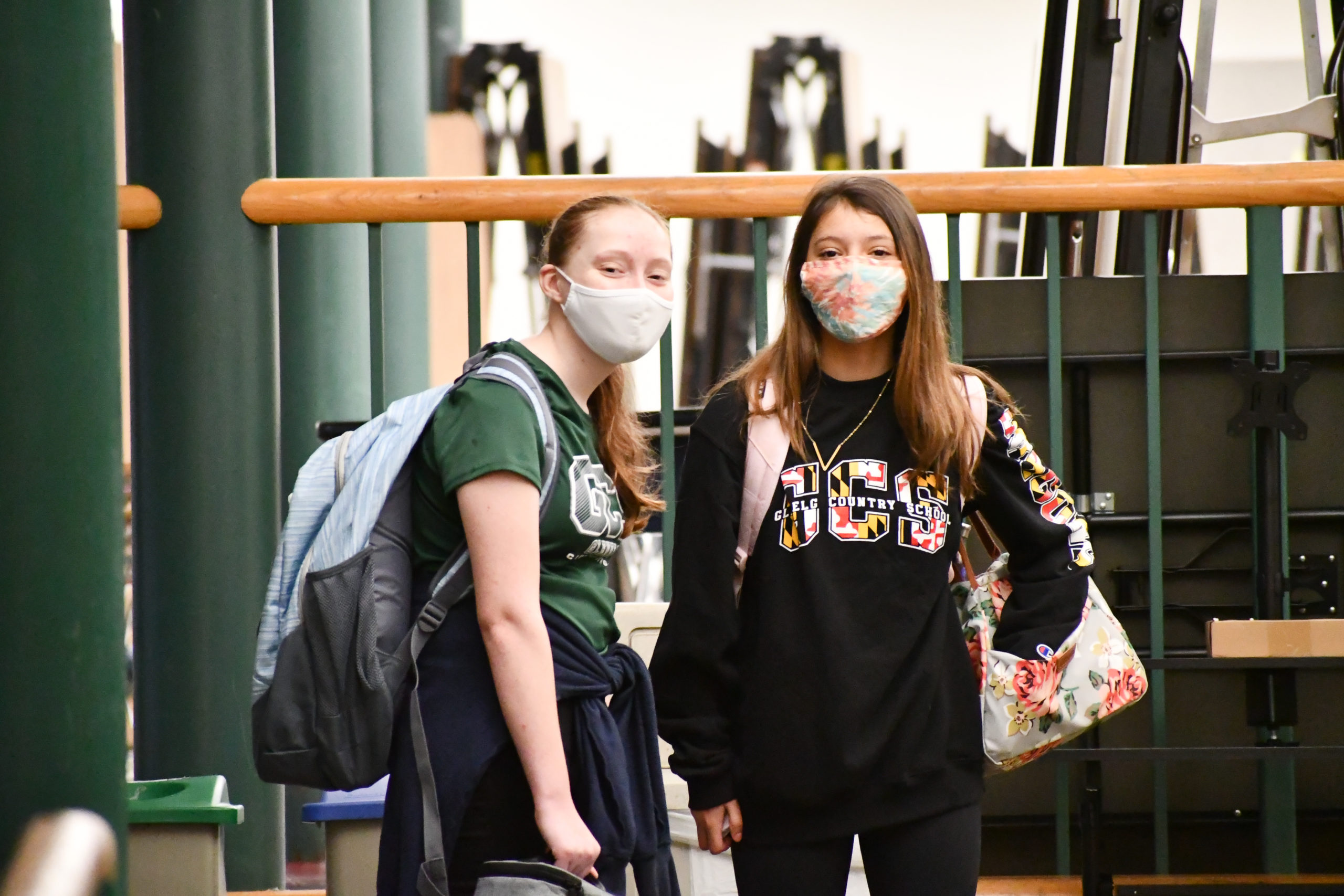News
March 19, 2021
Finding Normalcy in the Upper School
Brandon Neblett

On an early November morning, a walk through the Upper School provided a glimpse of Glenelg Country School teaching at its best. In one classroom, Joan Weber led sophomores through the Fender Method of analyzing Renaissance art. In another, Heather Vavalle explored the mysteries of corresponding angles in congruent triangles, while, in his classroom, Memi Pluznik discussed the elements of nature photography. Simultaneously, Walter Mattson pushed students to unpack the truths and ironies of a poem from early American history, while on another end of the building, Scott Proffitt encouraged students to unpack the grammar and stylistic conventions of an Augustan Rome poem. In each classroom, students and teachers collaborated in the interest of discovery and expression. All in a day’s work in the Upper School.
Yet, while very typical of an Upper School schedule, there was something very different about what was happening in each classroom. There were only several students present. Each teacher was manipulating several screens in various ways to teach the students in the room and a larger group of students who were on a screen, students engaging in class from home. On this first day of our full hybrid platform, learning was happening as usual—with students and teachers working together—and as it never had before. While students and teachers remain at the heart of each classroom experience, screens, styluses, speakers, and cameras play an essential role in making that experience happen. Technology has transformed the Upper School classroom.
Planning for the Fall
Every day last summer in the Upper School, MaryEllen Prantl, dean of students, Greg Koffel, director of studies, and I worked through the many layers of how to conduct classes in the academic year ahead. In preparing for both a fully digital program and a hybrid program, we sought to combine what we all learned from the spring’s foray into digital learning with a longer-term perspective on what would serve our students best. We sought to retain the long-established Upper School ethos that combines balance, excellence, and humanity with new academic technology and a new schedule that would allow teachers and students maximum flexibility. Most of all, because we knew that the year ahead would be unpredictable, we had to have an approach that worked well in multiple scenarios.
We developed three fundamental principles. First was a consistent schedule. Given the lack of stability and consistency in other areas of life under COVID, the academic year would go much more smoothly if everyone knew what classes were happening each day, for how long, and in what order. The weekly schedule would remain the same every week regardless of school happening on campus, at home, or in some combination of the two.
The second was block periods. We knew that the shift to having students at home and on campus in the same class would create the need for more time in an academic period. Accommodating the inevitable communication challenges and technology glitches required longer chunks of time if each class would be productive and engaging. We landed on 75-minute periods—approximately 55% longer than periods in previous years—to ensure high engagement and deep learning
The final principle was health. We knew that consistently teaching through screens would mean mental and physical fatigue for students and teachers by the end of most days, especially those in utilizing our digital option. Meeting standard expectations about content coverage, skills development, and the full scope of classroom activities under this kind of fatigue would render our academic program unsustainable, so we made several critical adjustments to preserve energy, limit after school screen time, and embrace sleep. Most important were later start times, non-academic Wednesdays, specific limits on the length and frequency of homework assignments, and shortened assessments and evaluations.
Looking Ahead
Currently, about a third of Upper School students engage with the school in a wholly digital mode. The remaining students attend school two days per week on campus and two days per week from home in an alternating arrangement. All students attend school from home on Wednesdays, a day reserved for advisory, enrichment, Forum, and Office Hours.
The vast majority of the on-campus students with whom I’ve spoken are delighted to be back after months of learning from home. The same is true of teachers. The refrain echoing through the Gould Building is, “It’s so great to have the kids back!” Being together in person, even if only in part, reaffirms our sense of community, togetherness, and fellowship in something special. I have never appreciated what it means to be at Glenelg Country School as I have in these first days of our hybrid platform.
We will continue hybrid learning as long as we can. Increasingly, the experts point to a significant resurgence of infections this winter, so we know that we may all have to transition back to a fully digital experience for weeks or even months in this new year. While disappointing if it happens, we will adjust as we have to, embracing yet another pivot for teaching and learning under COVID-19. Whenever we return to campus, I eagerly anticipate another stroll through the hallways, and I can feel that spirit of the dragon all around me once more.
Editor’s Note: The Upper School has continued to progress with students returning to in-person learning four days per week in February.

